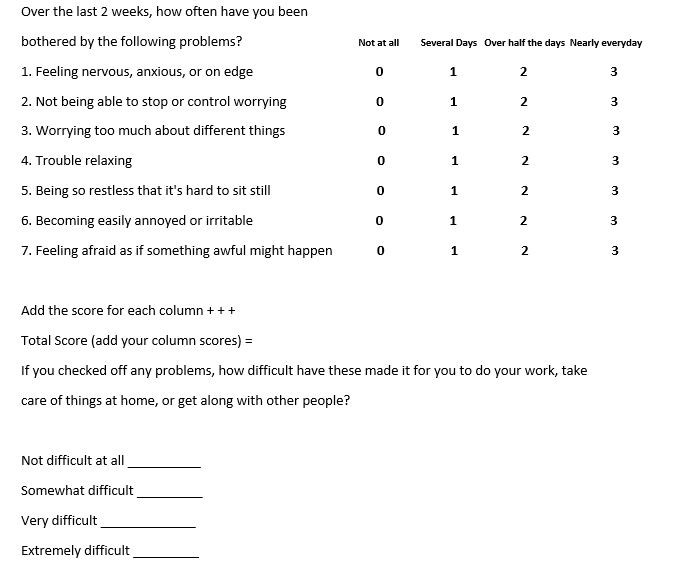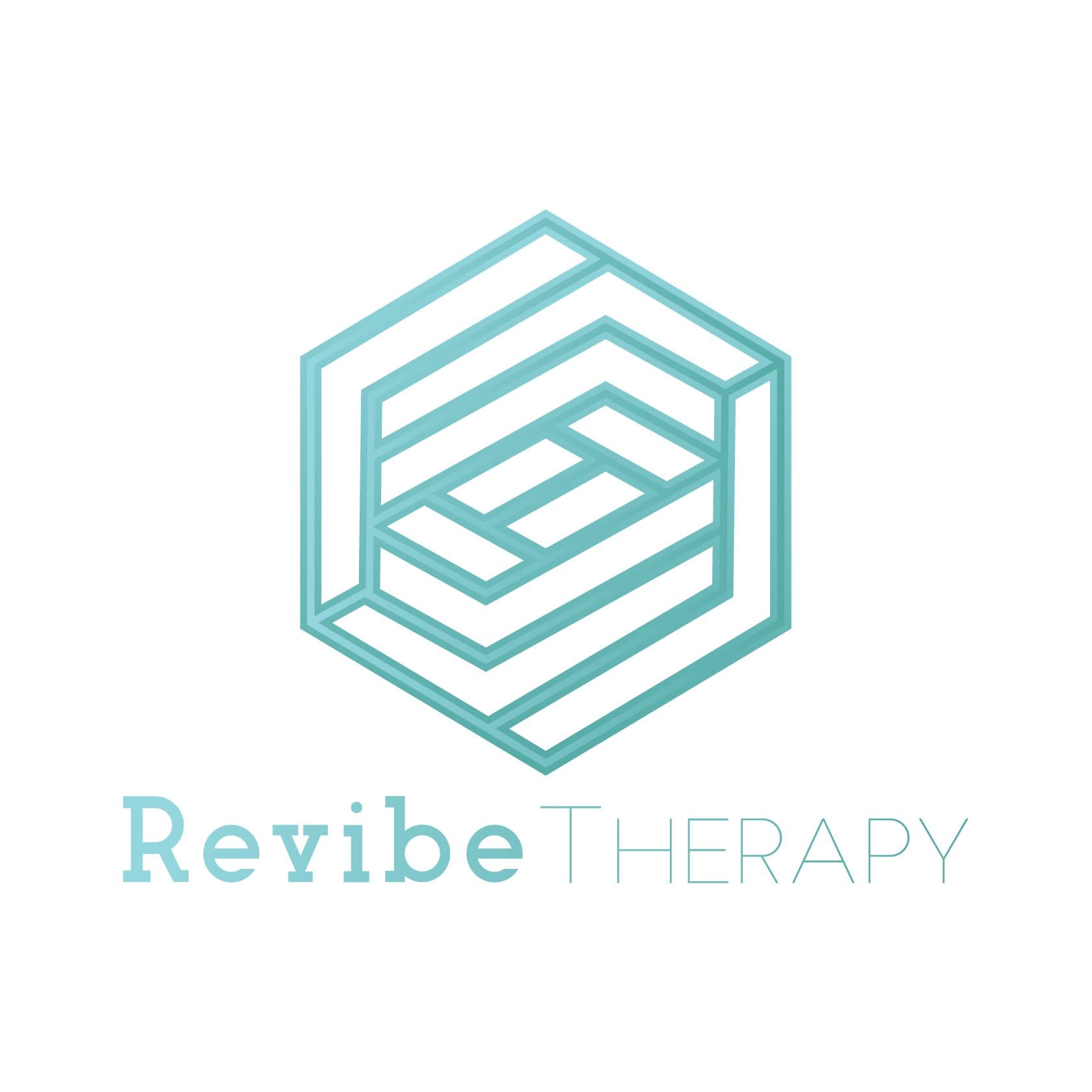Anxiety disorders are now considered to be the most common and prevalent mental disorders in the United States. Generalized Anxiety disorder (or GAD) is at the forefront affecting about 6.8 million American adults, that’s 35% of the population. Regrettably, out of all the different type of anxiety related disorders, GAD is the least successfully treated type of anxiety disorder. How do you know if you have General Anxiety Disorder (GAD)? Symptoms of GAD can vary depending on someone’s history and relationship with fear and worry. Anxiety is often started with the practice of stress. The most common symptoms of GAD include:
- Worrying and feeling nervous, irritable, or “on edge” for six months or more. This emotional anguish may feel like a sense of impending doom or at times, panic. In the case of GAD worry feels out of control and doesn’t feel manageable, even if the individual distinguishes it is disproportionate to the situation at hand and detrimental to health.
- Intolerance to uncertainty or new circumstances
- Trouble concentrating or focusing on task when it comes to daily living activities.
- Sleeplessness or Insomnia
- Easily startled
- Increased heart rate, hyperventilation, chest pains, sweating and shaking
- Lethargy or Fatigue
- Difficulty eating and swallowing normally
- Headaches or muscle pain
- Gastrointestinal (GI) problems like stomach pains or diarrhea
- Higher risk for problems like acid reflux, GERD, IBS, ulcers, migraines, chronic pain, insomnia and cardiovascular or heart issues.
Individuals suffering from GAD are at high risk for other Anxiety paired issues such as: substance abuse, phobias, panic attacks, post-traumatic stress disorder (PTSD) Obsessive-compulsive disorder (OCD), and depression. Many individuals go on in life without being diagnosed with GAD since many of the symptoms get mistaken for other health conditions.
WHAT IS THE ROOT CAUSE OF GAD?
Anxiety in it’s entirety is a feeling, and all feelings are beneficial, all feelings are good. GAD is a type of anxiety that has gotten stuck at an exacerbated level, because the amygdala, the part of the brain that perceives danger is not returning to baseline even after there is no threat, this is all controlled by the subconscious mind. The source and the root of the cause is often manufactured at the single digit ages of 2-9 years old. You might think, this doesn’t make any sense because I do not even recall those memories, precisely! your conscious mind only accounts for 5% of your true mental capacity and this is around what you are using a this very moment to read this article. All feelings are generated from your subconscious mind which account for 95%. You may not remember but your subconscious does.
GAD DISORDER IS GENERALLY TREATED WITH PSYCHOTHERAPY, MEDICATION, OR BOTH.
- Cognitive Hypnotherapy (CBT), helps you control your thoughts, emotions, and behavior by looking at the alternative perceptions of each.
- Acceptance and Commitment Therapy, focuses on increasing acceptance of your situation, the thoughts constantly running through your mind, and the struggle with symptoms can lead to increased psychological flexibility.
- Anti-Anxiety Medications are used to treat anxiety, which can include selective serotonin reuptake inhibitors (SSRIs), serotonin-norepinephrine reuptake inhibitors (SNRIs), the serotonergic medication Buspirone, sedative type medications like benzodiazepines or antidepressants. Beta Blockers (metoprolol, bisoprolol, carvedilol)a re also used to possibly control rapid heart rate, trembling voice, and shakiness. All the medications used to treat anxiety usually should given in combination with therapy, however, most individuals reach to medication and neglect proper Therapy. The big issues with medications used to treat GAD is that they can take several weeks to start working, and also included side effects, such as: such as weight changes, headaches, nausea or sleeplessness.
Hypnotherapy to eradicate the cause of GAD
The out of balance feeling you have now as an adult points to the fact this exacerbation of fear and worry started way back then when you learned the feeling ( Hypnotist call this the Initial Synthesizing Event or ISE.), you may not remember, but your subconscious does, proof of this is the out of balance worry and fear you feel now in the present, even if the situation and your world perception is under control. After you learned the feeling of fear, lets say at the age of 3, when you saw mom and dad screaming at each other while having a verbal conflict. Each of the following ages age 5, 9, and 12 you experienced a conflict, as a spectator or as the individual in the conflict, each time conflict happens again that anxiety comes up to the surface making you feel unease, each time rising slightly stronger than before, Hypnotist call this the Subsequent Synthesizing Events or SSE, then possibly when facing you own conflicts with others it almost seems as if Anxiety is coming up more frequently and with more intensity, this happens because the subconscious reinforces repetition, regardless if the repetition is good or bad for your well-being. Hypnotherapy places you in a hyper focused and relaxed states so that you may easily access when you learned the behavior and when it kept being reinforced various times later, along with the reasons of how Anxiety has protected you all this time. This is the reason Hypnotherapy can heal you down to your very core beliefs and worldview, to eventually not have to rely on medication or other unnatural approaches.
How do I know if I have Anxiety?
The GAD-7 Scale is currently used by clinicians as a measuring tool to detect the level of Anxiety present in an individual.

GAD-7 Anxiety Severity.
- GAD-7 total score
- for the seven items ranges from 0 to 21.
- Scores represent: 0-5 mild 6-10 moderate 11-15 moderately severe anxiety
- 15-21 severe anxiety.





